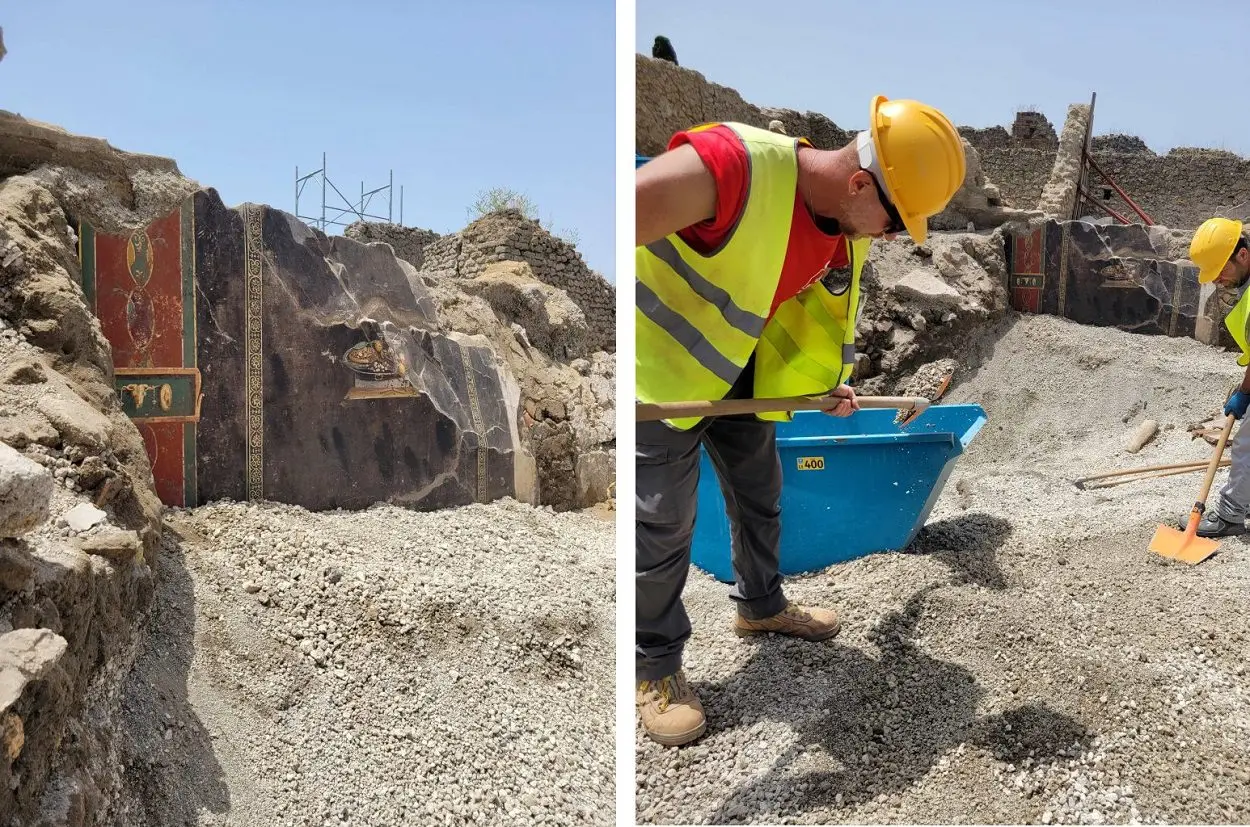Excavations in Pompeii’s Regio IX has led to the discovery of a 2,000 year-old fresco painting depicting a still life scene.
Pompeii was a Roman city, located in the modern commune of Pompeii near Naples in the Campania region of Italy. Pompeii, along with the Roman town of Herculaneum were buried under 4 to 6 metres of volcanic ash and pumice during the eruption of Mount Vesuvius in AD 79.
The Vesuvian eruption spewed forth a deadly cloud of super-heated tephra and gases to a height of 33 km, ejecting molten rock, pulverised pumice, and hot ash at 1.5 million tons per second. The eruption released approximately 100,000 times the thermal energy of the atomic bombings of Hiroshima and Nagasaki.
The fresco was discovered in the atrium of a house in insula 10 of Regio IX, which occupies the central part of Pompeii bounded to the north by the Via di Nola, to the west by the Via Stabiana, and to the south by the Via dell’Abbondanza.

The painting features a still life scene showing a goblet of wine placed on a silver tray, various fruits and spices, and a flat focaccia (panis focacius) – which may be a distant ancestor of the modern pizza.
According to the researchers, the scene is a representation of xenia, the Greek tradition of hospitality. Similar frescos have been previously found in other locations surrounding Mount Vesuvius.
The atrium was found in an area previously excavated in the 19th century, revealing a collapsed roof within a layer of white pumice and volcanic layers. Near an adjacent oven, the skeletons of three victims from the eruption were also discovered.
Gabriel Zuchtriegel, Director of the Archaeological Park of Pompeii said: “The fresco has some themes of the Hellenistic tradition, later elaborated by authors of the Roman-imperial era such as Virgil, Martial and Philostratus. I am thinking of the contrast between a frugal and simple meal, which refers to a sphere between the bucolic and the sacred on one hand, and the luxury of silver trays and the refinement of artistic and literary representations on the other.
Header Image Credit : POMPEII SITES

